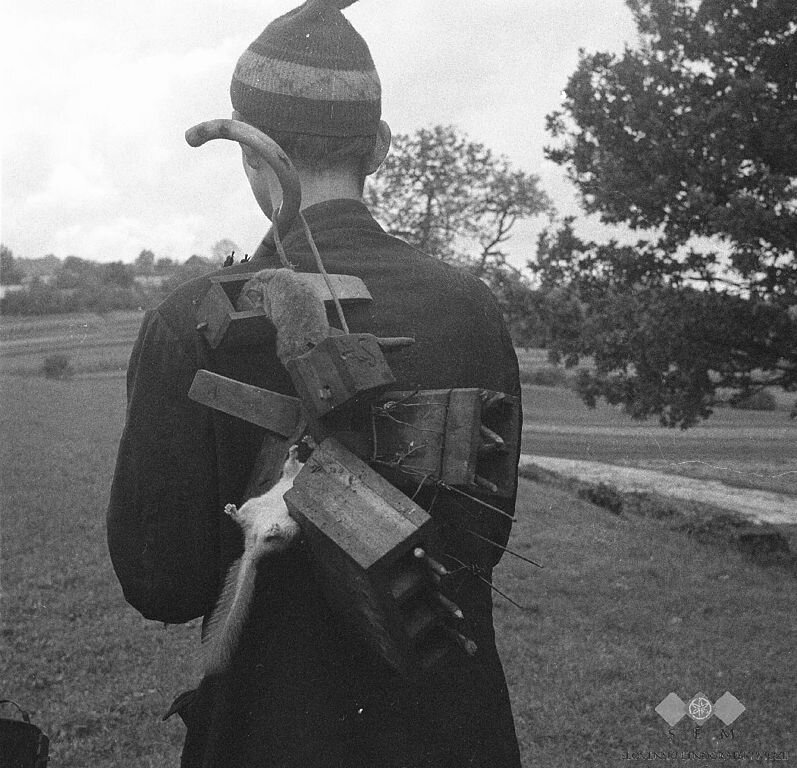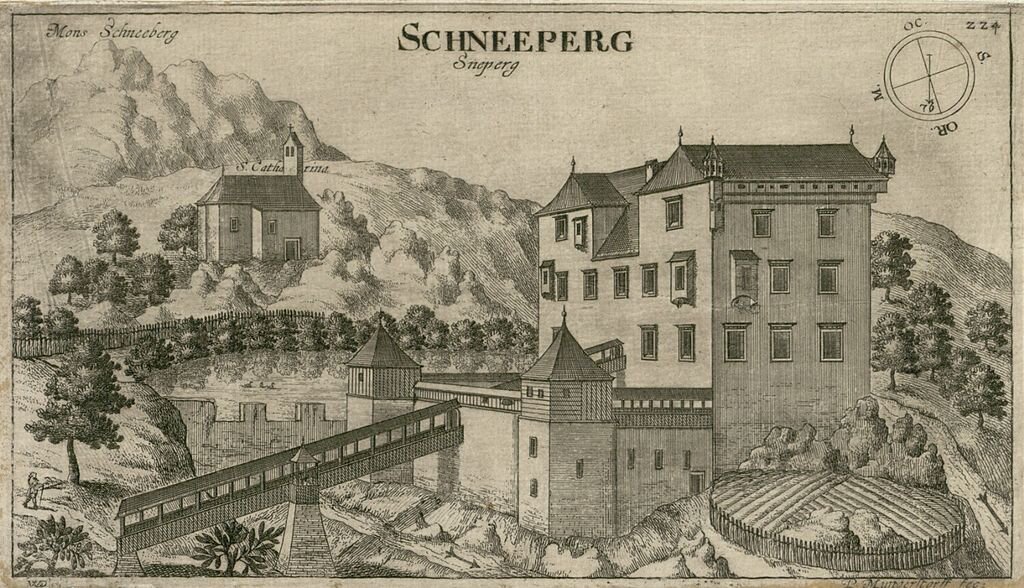21: Loška Dolina // The Hunt for the Humble Dormouse
The stunning Snežnik Castle in Loška Dolina // © Peter Kampfer / shutterstock
I knew very little about the humble dormouse, so a visit to the Dormouse Hunting Museum seemed like a very good idea, at least when it came to my aforementioned limited knowledge of dormice. In fact, I’ll sum up the extent of my dormouse mastery as follows; probably a mouse-type of creature, probably little to do with doors, probably anthropomorphised in fiction somewhere. Hardly my specialist subject on Mastermind, which, for the record, would probably 1990s WWF. Adam Bomb, for life.
The first portion of the Dormouse Hunting Museum didn’t tell me anything I didn’t already know about the rodents, because it didn’t tell me anything about them at all, filled as it was with all sorts of beasts rendered in taxidermy. I saw bears, wolves, lynxes and all the rest, big cats stretched over walls, stuck in time like weird inhabitants of a Pompeii in the wilderness.
I’ve got a soft spot for taxidermy, especially taxidermy that seemingly misses the mark. It is so incredibly weird, so bizarre, such an unusual skill to have developed over time. As ever, I made a mental note to look into the history of taxidermy, although I knew that I would forget this memorandum before I’d even left this room.
The second portion was all about dormice, finally opening the door to a world of knowledge about an animal I’d never considered. Slovenes have a thing for dormice you see, long considering them a delicacy, with hunting the rodents a big enough deal to deserve its own museum in the grounds of an actual castle.
Why hunt and eat the dormouse? Well, it began in the 13th-century when the pesky buggers went on many feeding rampages and forced the hand of the locals, who embarked on a culling of dormouse that reaped unusual benefits. You see, hunters were surprised to find that the meat of this tiny beast was actually all sorts of delicious. Not only that, but the dormouse’s fur could be used to make fancy hats, provided you killed enough of the buggers, and their fat contained all manner of health benefits. It really was a win, win, win situation for the locals.
Not so much for the dormouse, but hey, at least they got this museum, I guess?
Despite the culling, the humble and determined dormouse managed to survive and still thrives today, largely because ‘breeding like rabbits’ should probably be changed to ‘breeding like dormice’. Slovenes still commence dormouse hunting season every October, hitting the fields in search of the modest Gliridae, a word that ironically autocorrects to ‘grilled’. They don’t necessarily catch any, but the whole thing is wrapped up in enough booze to float an economy and stories upon stories upon stories. I was still somewhat taken aback by it all, but I left the museum a smidge wiser about the existence and meaning of the unassuming dormouse.
The museum was in the grounds of Snežnik Castle, itself found within the boundaries of Loška Dolina, a tiny municipality that I visited on several occasions for the fabled Zeleni Kras guide for In Your Pocket, many moons ago. A tiny municipality of fewer than 4,000 people, it still managed to be home to the aforementioned castle along with Križna Jama, the fragile but astounding cave that allows a mere 100 people within its walls annually, a cave that I thought made for an excellent cover shot.
Needless to say, the Disney monolith that is Postojna wasn’t too happy with that, and their management brought us in for what was, by all accounts, a bollocking. They accused us of putting their competition on the cover of the guide and threatened to pull out of all their advertisements. You can make your own judgements about that, but keep in mind that Križna accommodates a maximum of 100 visitors per year, and Postojna built an actual train line into their cave. I don’t know the actual definition of ‘competition’, but forgive me for letting out a hearty guffaw. The childish paranoia and neurosis that Slovenia’s most popular tourist attraction showed on that day have never left me, itself a fairly childish response, but my standing as a humble man allows me that weakness.
Beautiful Križna Jama © Zeleni Kras / Facebook
But hey, less of that, more of Križna and Snežnik, right? I was shepherded into the former, clad head to toe in a classic red jumpsuit, ready to be chaperoned through the cave’s continuous chain of subterranean emerald lakes, each as spellbinding and awe-inspiring as the last, although we were only able to see a handful of them due to that aforementioned fragility. The cave is home to a huge range of bones, remains of animals indigenous to its curious underworld, which makes it the fourth-largest cave in the world in terms of biodiversity. You can keep your trains.
And then there was Snežnik, a stunning castle some 20-minutes south of Križna Jama, the second half of a quite marvellous day of exploring Loška Dolina. The castle, resplendent in white and filled with more curious items than all the Room 101s on the planet, moved through the hands of many from its construction in the 13th century all the way my visit, although its many owners had wisely kept the famous coat of arms that features a goat with fiery ears.
One of the owners was Count Jurij Gotfrid Lichtenberg, a man who took over the castle in 1707 before bestowing it upon his descendants over the next generations, a group who allowed the debts to pile up and up. With nowhere to turn, the family was forced to put the castle up and take a lottery loan, a lottery that was open to all with Snežnik or 250,000 florins as the main prize. Hilariously enough, the lottery was won by a Hungarian blacksmith, a chancer who decided he was better off with the money than the castle.
The curious history continued into the 20th century, one that saw many of Slovenia’s castles destroyed as the Yugoslav communists looked to remove the blot of wealth from the region's history. Snežnik managed to survive this thanks in part to the determined dedication of its caretaker, who guarded the castle for decades and protected it from potential looters and vandals, eventually coming to an agreement with the authorities who subsequently used it as a fancy hunting ground for official visits.
Were they hunting dormice? Most likely not, they were Big Time Charlies after all, but never rule out the power of the humble dormouse.



